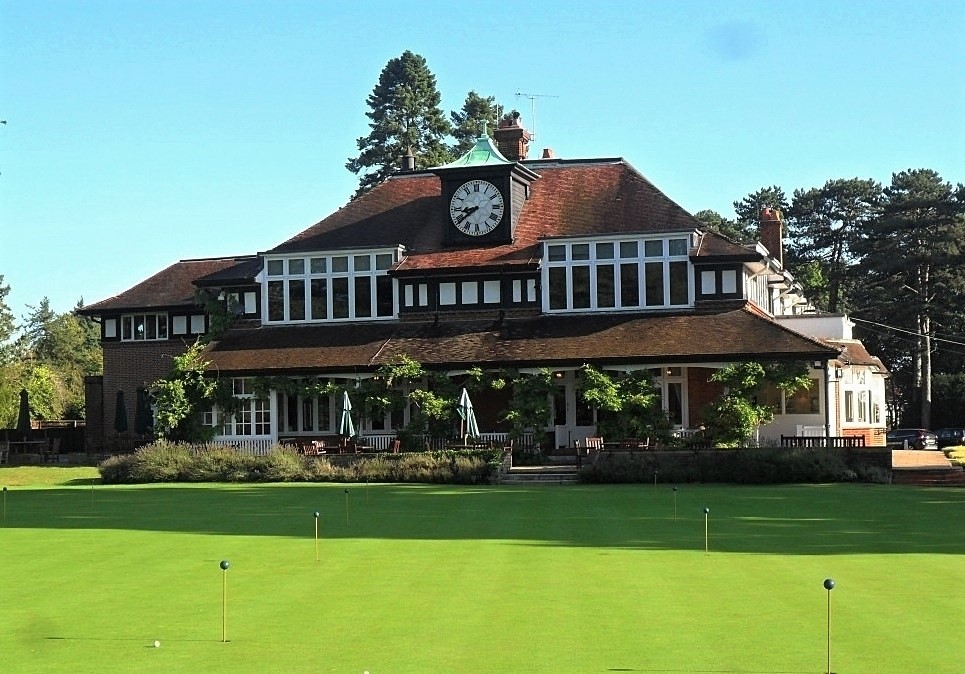
Many a golfer has loyalty to one or the other, but few doubt the greatness of Sunningdale’s Old and New courses. Each has their origins in the heathland revolution which was ignited by the likes of Willie Park Jr, WH Fowler, A McKenzie, HS Colt; all grandees of British golf architecture history. All would have their opinions made known through their heathland masterpieces, though it is Willie Park Jr who is often forgotten. Ironic then that it is likely him more than anybody who is responsible for the first attempt to transplant some of the ideals captured in links into inland designs. An epic year, 1901, saw the opening of three iconic Park Jr designs, Sunningdale Old, Huntercombe & Notts. While altered to one degree or another, these courses clearly demonstrate that change in golf course design was afoot. However, no course to date was on the scale of Sunningdale in terms of ambition or cost. Amazingly, at the time, it was not advisable to build a course over sandy heathland terrain. The concept required a breakthrough in that Sunningdale was the first course to be wholly sown from seed. Combined with the prodigious scale of the design (trees and a severe reduction of green size would later visually reduce the scale dramatically), the two concepts launched Sunningdale into instant fame.
That isn’t to say Sunningdale left no room for criticism. In The American Golfer of March 1917: Park and the Past, Henry Leach stated “He (Park Jr) was responsible for the primary design of the latter (Sunningdale), a beautiful course cut out of a wilderness of heather on some high, rolling land in Berkshire. Mr Colt soon set himself to work on the first designs when they had been applied, and he has carried out vast improvements on the original model, so that Sunningdale as we know it now, the inland course that I still consider as the best and most delightful to play upon in the whole of Britain is not at all what was at first. Still Willie was in at the beginning with Sunningdale; that is a lasting distinction.”
Bernard Darwin, among others, believed Sunningdale had major deficiencies with the short holes and that the course played extremely long for the handicap player. As if by magic, the introduction of the Haskell solved the length problem. It would take the hand of an experienced architect to develop Sunningdale into the course we see today; enter HS Colt...except, Colt wasn’t terribly experienced! Colt left the legal profession and would have taken a significant cut in salary when hired as the club secretary in 1901 for £150 per annum. Colt would over the course of the next decade, if not alter the fabric of Sunningdale Old; essentially use the course as a canvass for the invention of what has become modern design. Two of the primary traits of Colt’s style was a steadfast adherence to naturalism and to place greens on plateaux; a design concept which carried through the next 115 years and remains popular to this day. Two of the most high profile examples at Sunningdale are short holes, the 4th and 8th. In all, I believe Colt created four new holes (4, 8,12 & 17), altered seven green sites, altered the bunker scheme and a completed a striking reduction in green sizes (1, 6, 11, 12 & 15 are about half their original size).
Sunningdale has hosted countless top flight events including the inaugural Professional Matchplay Championship in 1903, The Women’s British Open, The Walker Cup and of course The Open’s first sectional qualifying in 1926 when Bobby Jones shot an “incredible and indecent” 66; 33 going out, 33 coming back, 33 putts and 33 other shots. However, the club may well be most proud as the host for the annual Sunningdale Foursomes. Amateurs and professionals alike vie not for prize money, but for the distinction of one’s name appearing in gold letters on the handsome honours board.

Prior to the opening of the New Course, the first tee was under the shade of the famous oak. Even so, the current shot is attractive. In days gone by, the fairway was further left. When land was acquired the area where the humps are became part of the course.
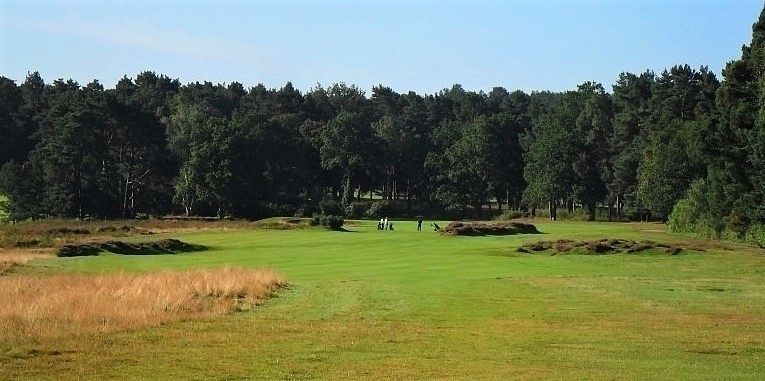
The Sunningdale Urns which contained Iron Age body parts found in these mounds are now in the Reading Museum.
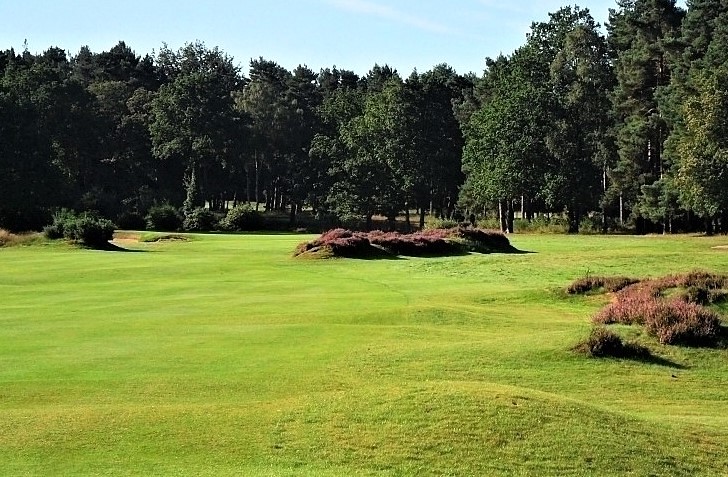
Looking back to the house; at one time the 1st and 17th greens were combined.
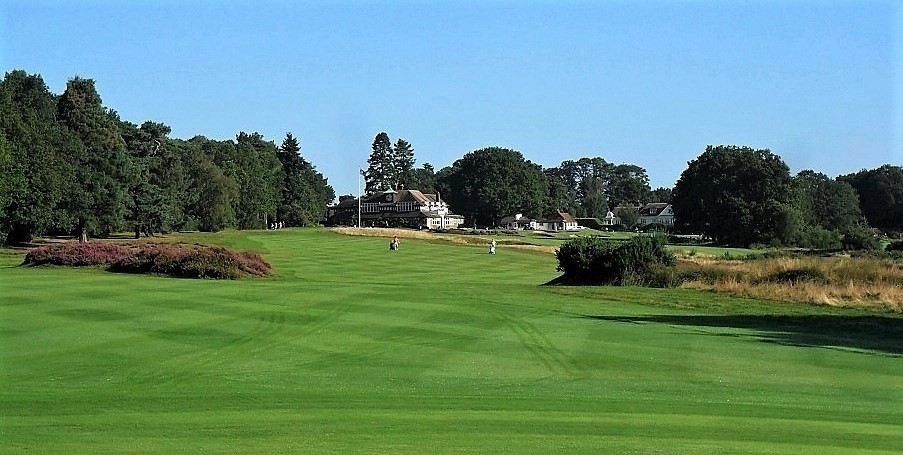
The difficult 2nd and short two-shotter 3rd are very much as Park designed. One can readily see the similarity between the 2nd and many holes at Huntercombe.
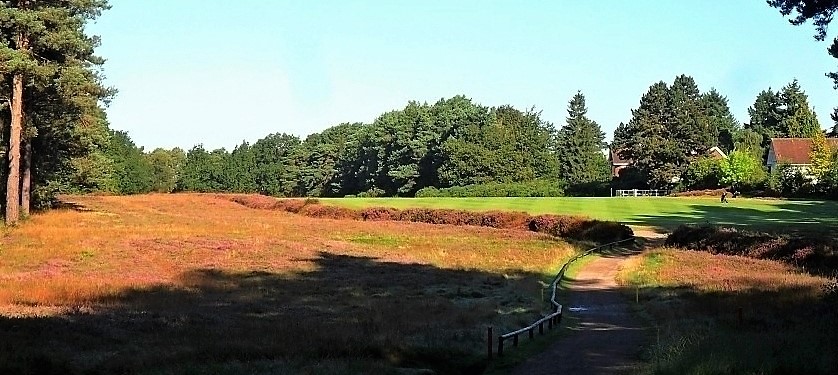
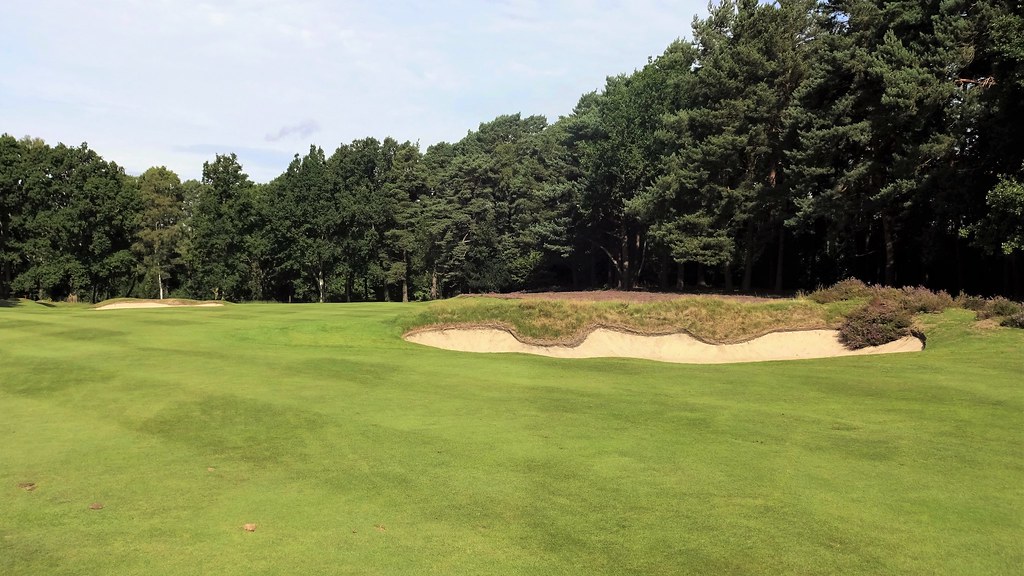
3rd.
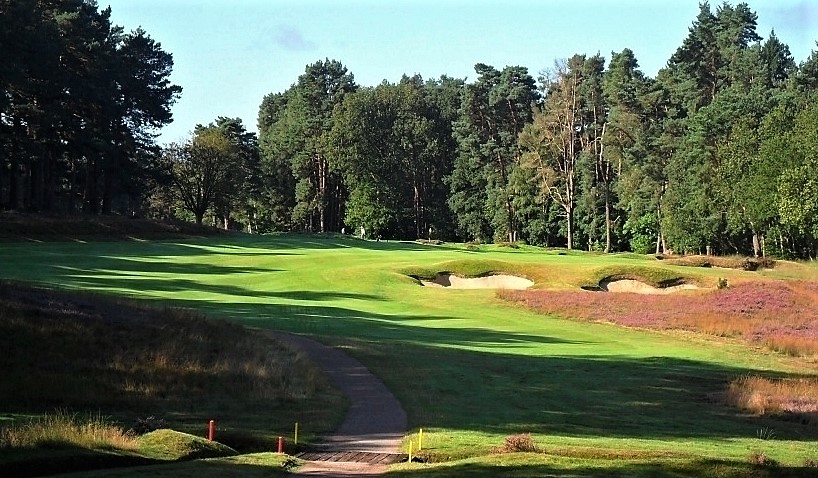
3rd back in the day.

As noted previously, the short 4th was completely changed by Colt. Just this year the tee was moved further right. This new placement offers the advantage of shots less likely leaking right onto the rear path and the green fully opens up. Previously, trees on the left hindered the shot a bit too much.

4th back in the day.

4th green during 1912 PGA Matchplay. Look at the contours!

The 5th is reputed to be the first hole in the UK to incorporate a specific golf-related man-made water hazard. Many people dislike the hazard, but I like it.
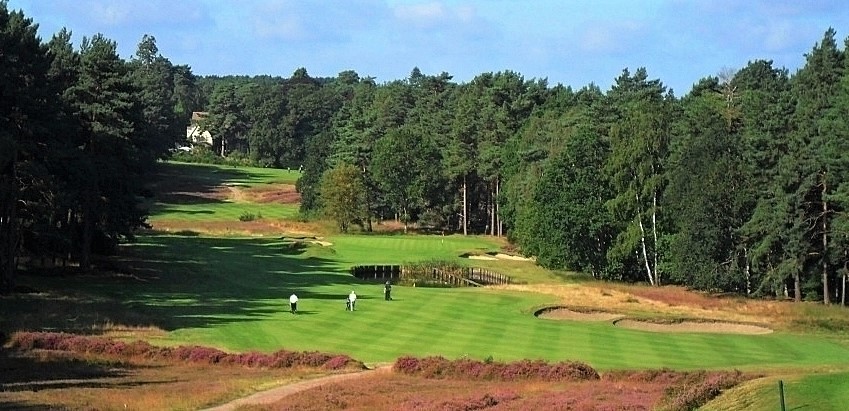
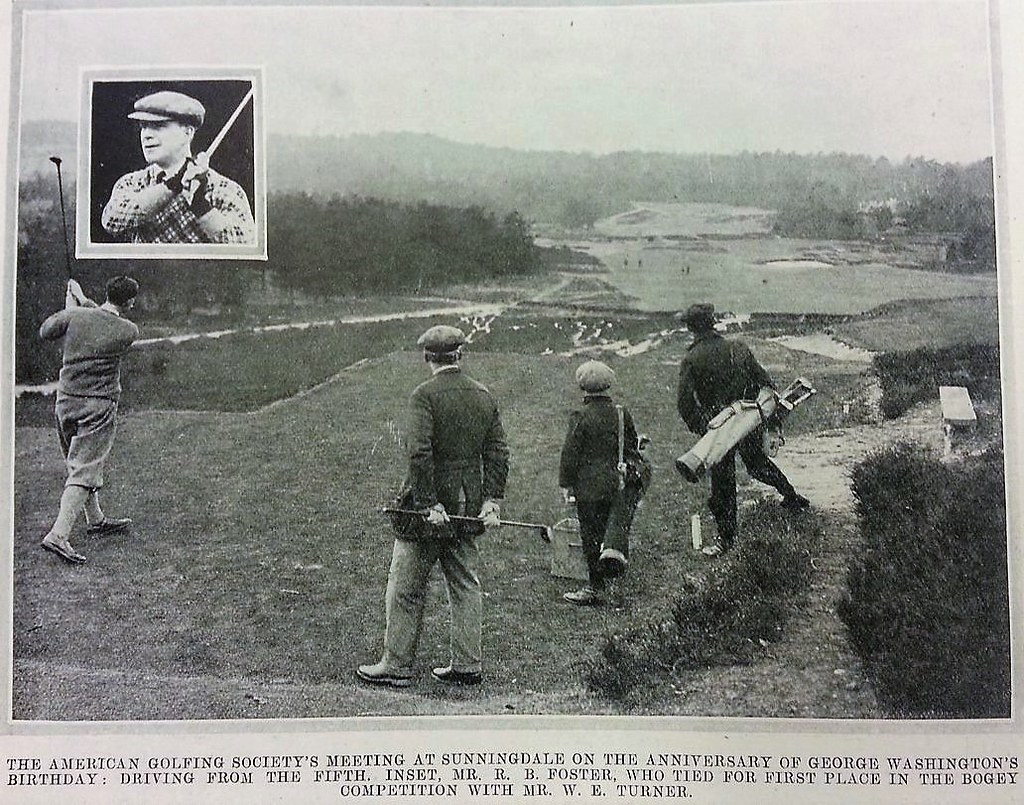

At some point between Colt resigning as Secretary in 1913 and prior to the completion of the New Course in 1922, the green was sensibly moved further right behind the pond.
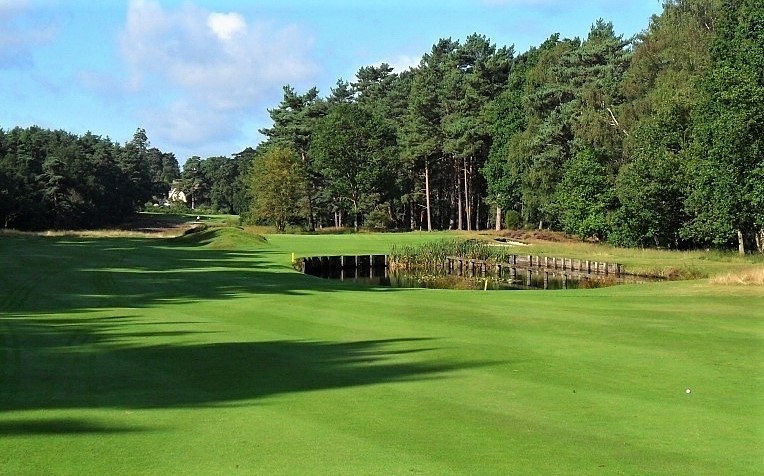
I suspect this heather clad mound is spoil from the pond; very Walton Heath like.
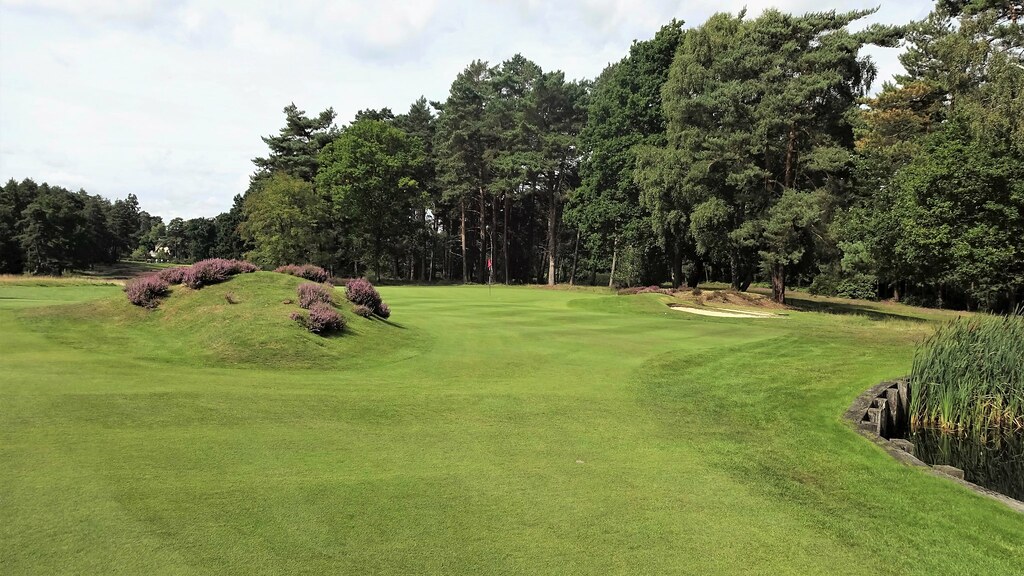
The attractive 6th is as Park Jr designed. In essence, with a required carry for the approach, the 6th is quite similar to the 5th.
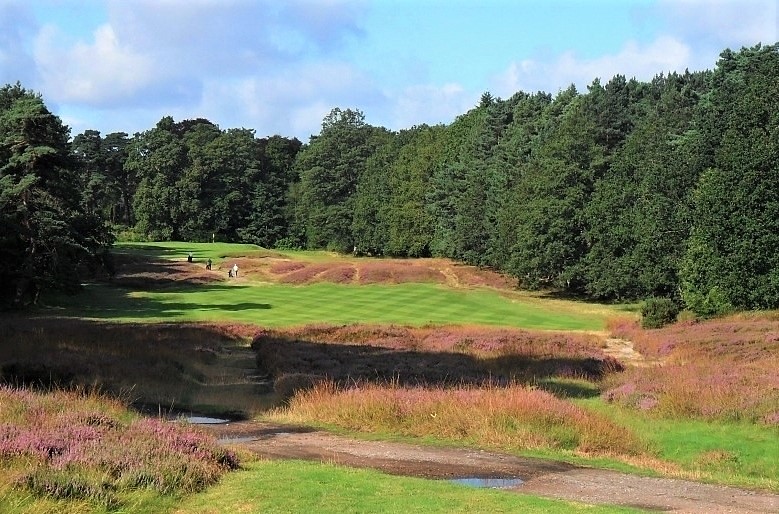
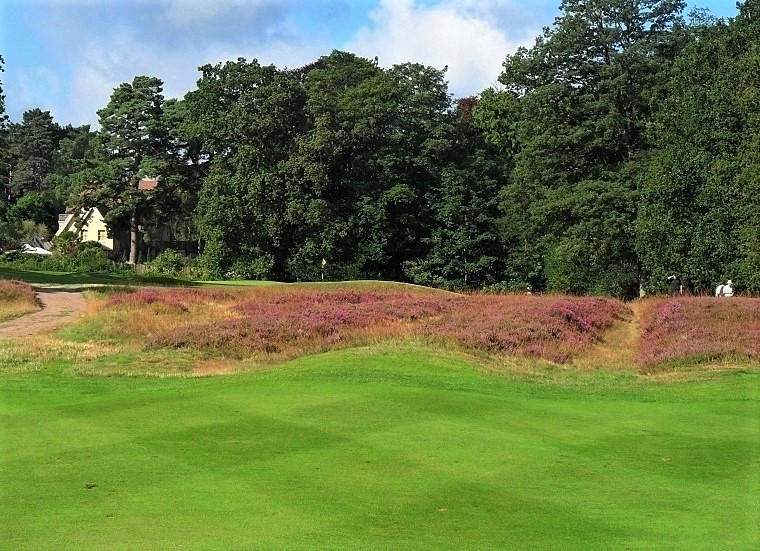
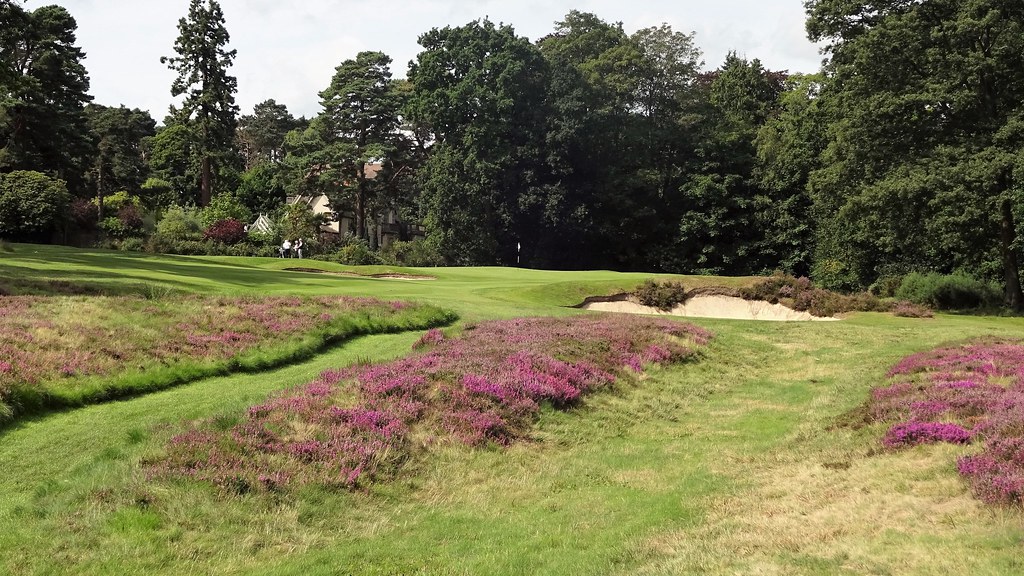
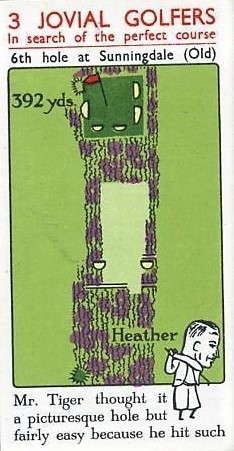
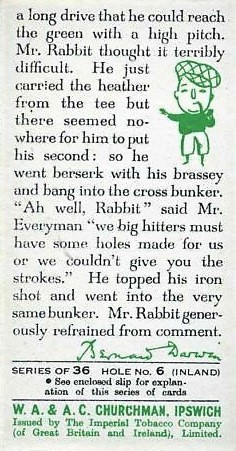
Radically altered from Park Jr's 7th, Colt considerably shortened the hole by eliminating the dogleg left to a green well removed from the present green. After a blind drive, the hole moves slightly right over an interrupted fairway. I believe the empty pit on the left now has sand in it.

Looking back to the tee.

Darwin thought Colt's change to the seventh making the once blind par three 8th more visible was to great advantage. I am not convinced visibility was the main problem with the hole. The Colt version isn't a paragon of visibility. I don't think there is enough green surface to properly accomodate keen conditions.

The short par 4 ninth and much longer two-shot 10th are essentially Park Jr holes, but the 10th is decidely better. Although, I think the club recently placed bunkers in the heathery upslope area of the 9th.
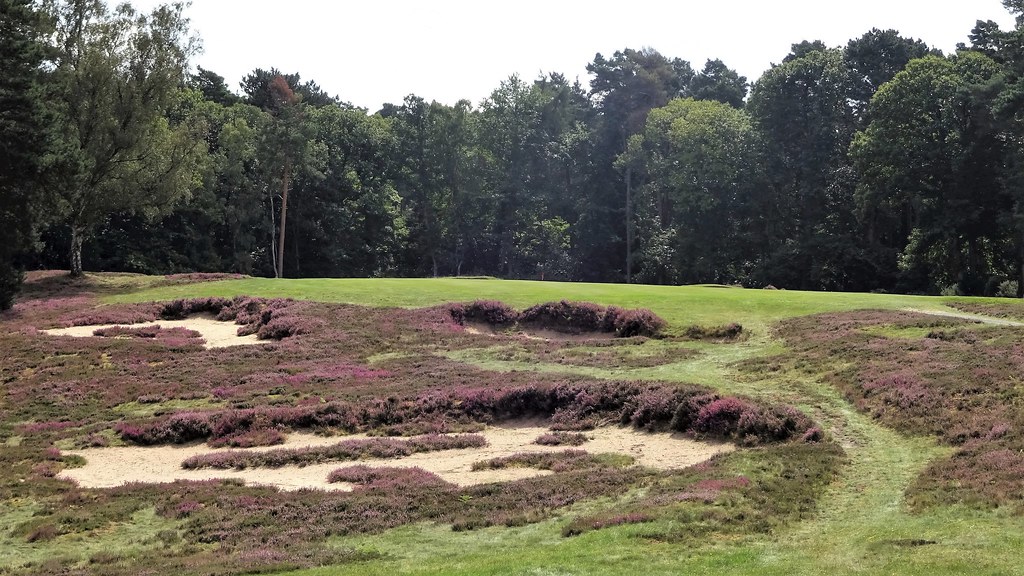
H Rountree Watercolour of the 10th.


The 10th as Park Jr and later Colt designed the hole.

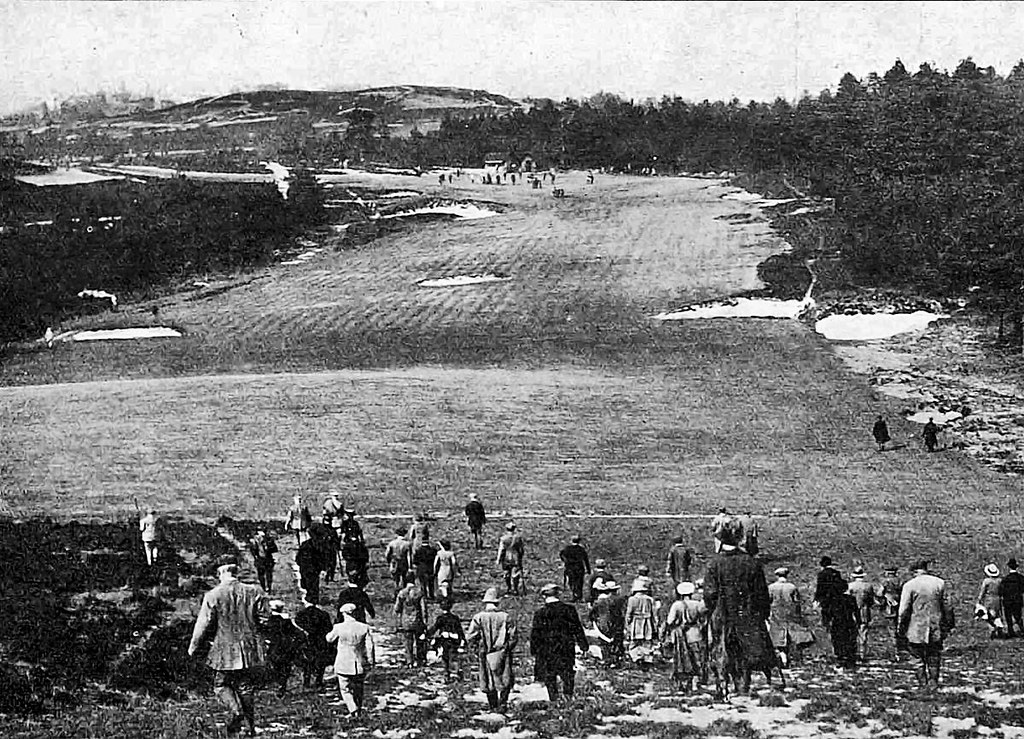
Closer to the green.
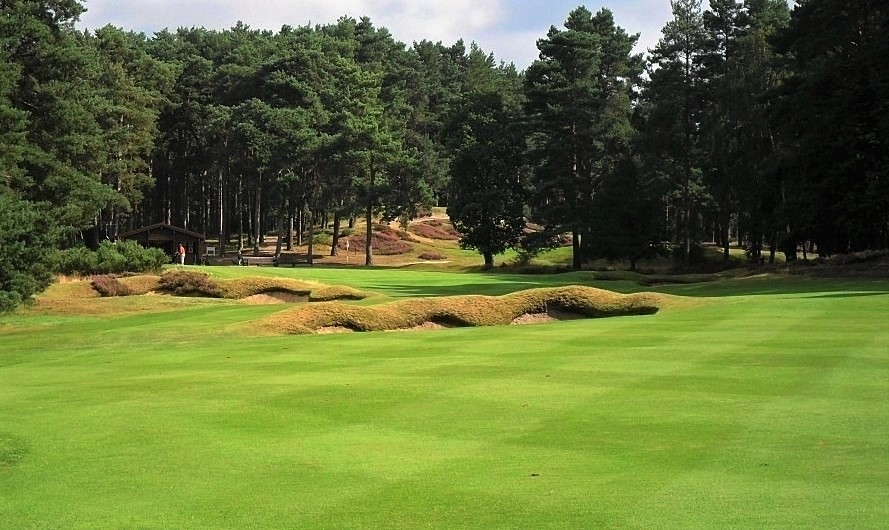
Looking back to the tee.
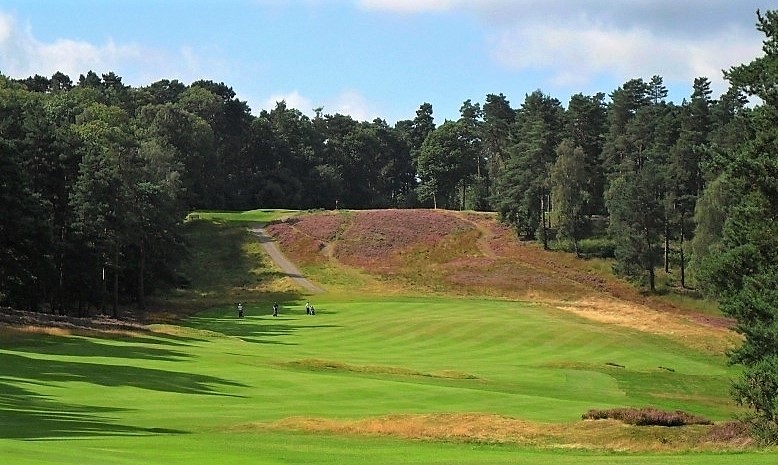
More to follow.
Ciao